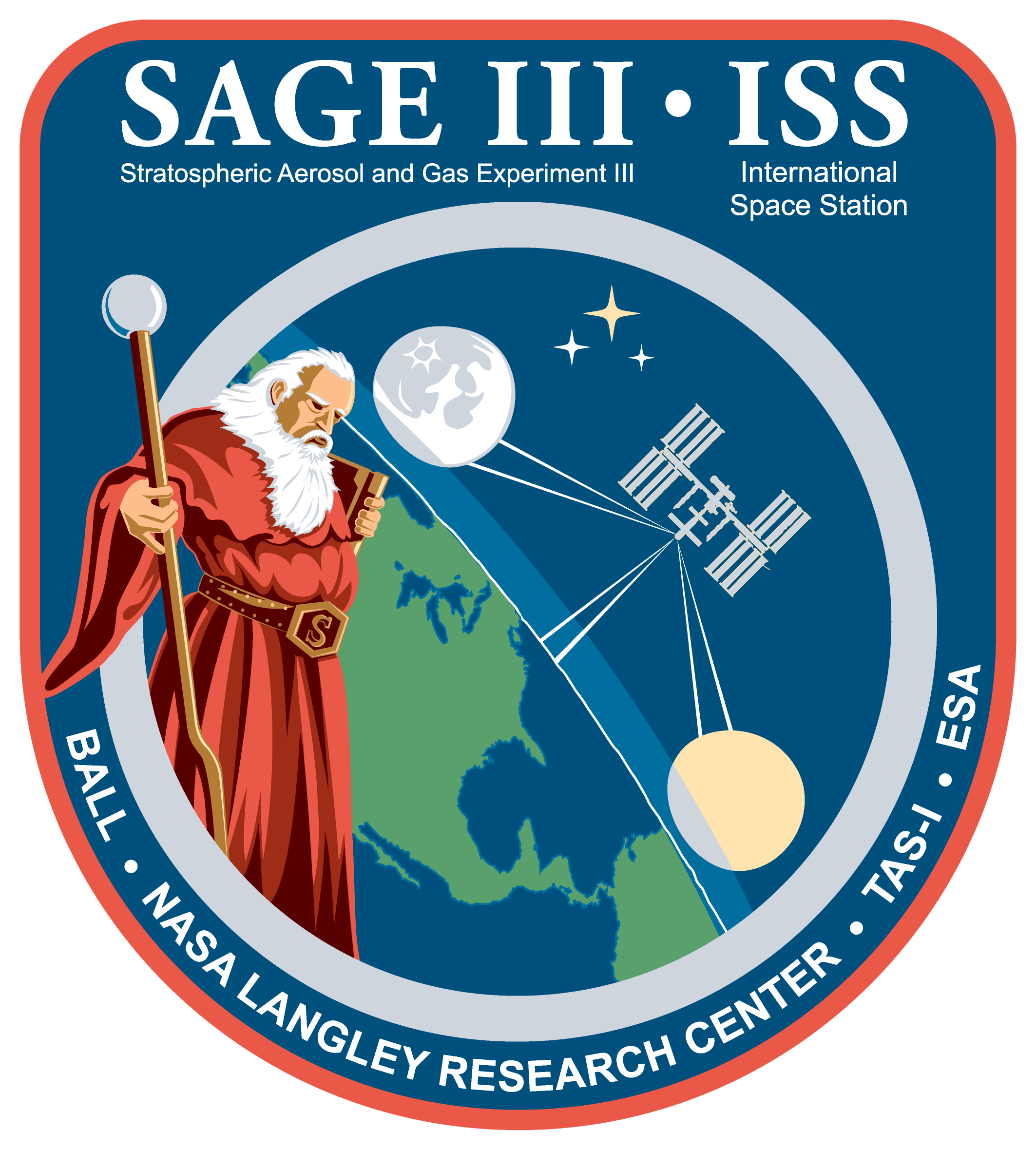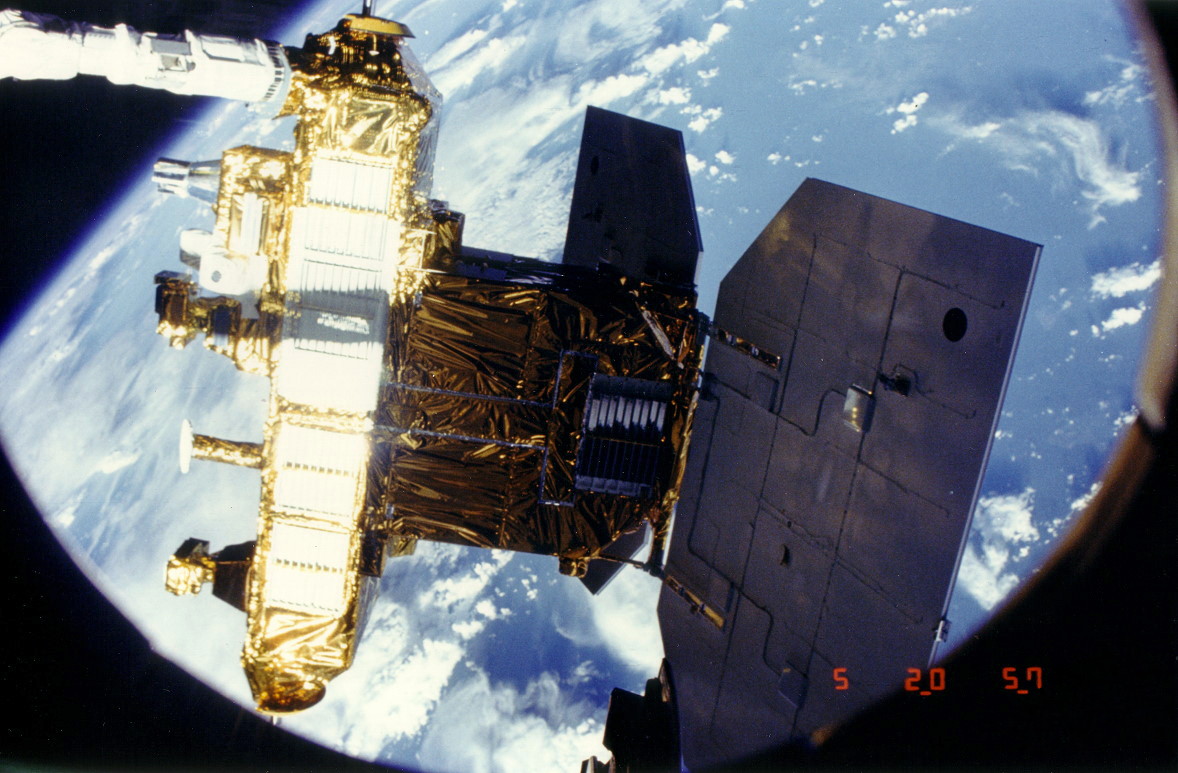|
Stratospheric Aerosol And Gas Experiment
The Stratospheric Aerosol and Gas Experiment (SAGE) is a series of remote sensing satellite instruments used to study the chemical composition of Earth's atmosphere. Specifically, SAGE has been used to study the Earth's ozone layer and aerosols at the troposphere through the stratosphere. The SAGE instruments use solar occultation measurement technique to determine chemical concentrations in the atmosphere. Solar occultation measurement technique measures sunlight through the atmosphere and ratios that measurement with a sunlight measurement without atmospheric attenuation. This is achieved by observing sunrises and sunsets during a satellite orbit. Physically, the SAGE instruments measure ultraviolet/visible energy and this is converted via algorithms to determine chemical concentrations. SAGE data has been used to study the atmospheres aerosols, ozone, water vapor, and other trace gases. History There has been 4 series of SAGE instruments: * SAGE I - Flew on the Explorer 60 sa ... [...More Info...] [...Related Items...] OR: [Wikipedia] [Google] [Baidu] |
Remote Sensing
Remote sensing is the acquisition of information about an object or phenomenon without making physical contact with the object, in contrast to in situ or on-site observation. The term is applied especially to acquiring information about Earth and other planets. Remote sensing is used in numerous fields, including geography, land surveying and most Earth science disciplines (e.g. hydrology, ecology, meteorology, oceanography, glaciology, geology); it also has military, intelligence, commercial, economic, planning, and humanitarian applications, among others. In current usage, the term ''remote sensing'' generally refers to the use of satellite- or aircraft-based sensor technologies to detect and classify objects on Earth. It includes the surface and the atmosphere and oceans, based on propagated signals (e.g. electromagnetic radiation). It may be split into "active" remote sensing (when a signal is emitted by a satellite or aircraft to the object and its reflection detected by ... [...More Info...] [...Related Items...] OR: [Wikipedia] [Google] [Baidu] |
Explorer 60
Explorer 60, also called as SAGE (Stratospheric Aerosol and Gas Experiment) and was the second of the Applications Explorer Missions (AEM), AEM-B (Applications Explorer Mission-B), was a NASA scientific satellite launched on 18 February 1979, from Wallops Flight Facility (WFF) by a Scout D-1 launch vehicle. Spacecraft Explorer 60 had a launch mass of . The spacecraft was designed for a 1-year life in orbit. Explorer 60 was a small, versatile, and low-cost spacecraft made of two distinct parts: (1) the SAGE instrument module containing the detectors and the associated hardware, and (2) the base module containing the necessary data handling, power, communications, command, and attitude control subsystem to support the instrument mode. The base module includes the telemetry data system and a communications subsystem that makes use of a conical log spiral S-band antenna and two Very high frequency (VHF) antennas. Mission The objective of the SAGE mission was to obtain strato ... [...More Info...] [...Related Items...] OR: [Wikipedia] [Google] [Baidu] |
International Space Station
The International Space Station (ISS) is the largest modular space station currently in low Earth orbit. It is a multinational collaborative project involving five participating space agencies: NASA (United States), Roscosmos (Russia), JAXA (Japan), ESA (Europe), and CSA (Canada). The ownership and use of the space station is established by intergovernmental treaties and agreements. The station serves as a microgravity and space environment research laboratory in which scientific research is conducted in astrobiology, astronomy, meteorology, physics, and other fields. The ISS is suited for testing the spacecraft systems and equipment required for possible future long-duration missions to the Moon and Mars. The ISS programme evolved from the Space Station ''Freedom'', a 1984 American proposal to construct a permanently crewed Earth-orbiting station, and the contemporaneous Soviet/Russian '' Mir-2'' proposal from 1976 with similar aims. The ISS is the ninth space station to ... [...More Info...] [...Related Items...] OR: [Wikipedia] [Google] [Baidu] |
SpaceX Dragon 2
Dragon 2 is a class of partially reusable spacecraft developed and manufactured by American aerospace manufacturer SpaceX, primarily for flights to the International Space Station (ISS). SpaceX has also launched Private spaceflight, private missions such as Inspiration4 and Axiom Mission 1. There are two variants: Crew Dragon, a spacecraft capable of ferrying four crew, and Cargo Dragon, an updated replacement for the original SpaceX Dragon, Dragon 1. The spacecraft consists of a reuseable space capsule and an expendable trunk module. The spacecraft launches atop a Falcon 9 Block 5 rocket and the capsule returns to Earth via splashdown. Cargo Dragon space logistics, supplies cargo to the ISS under a Commercial Resupply Services#Commercial Resupply Services phase 2, Commercial Resupply Services-2 contract with NASA. The SpaceX CRS-21, first flight of Dragon 2 in a cargo configuration launched in December 2020. It shares this duty with Northrop Grumman Innovation Systems' Cygnus ... [...More Info...] [...Related Items...] OR: [Wikipedia] [Google] [Baidu] |
Falcon 9
Falcon 9 is a partially reusable medium lift launch vehicle that can carry cargo and crew into Earth orbit, produced by American aerospace company SpaceX. The rocket has two stages. The first (booster) stage carries the second stage and payload to a certain altitude, after which the second stage lifts the payload to its ultimate destination. The rocket evolved through several versions. V1.0 flew from 2010–2013, V1.1 flew from 2013–2016, while V1.2 Full Thrust first launched in 2015, encompassing the Block 5 variant, flying since May 2018. The booster is capable of landing vertically to facilitate reuse. This feat was first achieved on flight 20 in December 2015. Since then, SpaceX has successfully landed boosters over 100 times. Individual boosters have flown as many as 15 flights. Both stages are powered by SpaceX Merlin engines, using cryogenic liquid oxygen and rocket-grade kerosene (RP-1) as propellants. The heaviest payloads flown to geostationary transfer or ... [...More Info...] [...Related Items...] OR: [Wikipedia] [Google] [Baidu] |
SpaceX CRS-10
SpaceX CRS-10, also known as SpX-10, was a Dragon Commercial Resupply Service mission to the International Space Station (ISS) which launched on 19 February 2017. The mission was contracted by NASA as part of its Commercial Resupply Services program and was launched by SpaceX aboard the 30th flight of the Falcon 9 rocket. The mission ended on 19 March 2017 when the Dragon spacecraft left the ISS and safely returned to Earth. Operations history CRS-10 is part of the original order of twelve missions awarded to SpaceX under the Commercial Resupply Services contract. , a NASA Inspector General report had this mission manifested for November 2016. The launch was put on hold pending investigation of the pad explosion in September 2016, with a tentative date no earlier than January 2017, subsequently set for 18 February. On 12 February 2017, SpaceX successfully completed a static fire test of the Falcon 9 engines on Pad 39A. An initial launch attempt on 18 February 2017 was scrub ... [...More Info...] [...Related Items...] OR: [Wikipedia] [Google] [Baidu] |
SAGE III On ISS
SAGE III on ISS is the fourth generation of a series of NASA Earth-observing instruments, known as the Stratospheric Aerosol and Gas Experiment. The first SAGE III instrument was launched on a Russian Meteor-3M satellite. The recently revised SAGE III was mounted to the International Space Station where it uses the unique vantage point of ISS to make long-term measurements of ozone, aerosols, water vapor, and other gases in Earth's atmosphere. History of the SAGE legacy The first SAGE instrument was launched on 18 February 1979, to collect data on the various gases in the atmosphere, including ozone. The data collected on SAGE I and the following instrument SAGE II, which began taking measurements in October 1984, were critical to the discovery of the Earth's ozone hole and the creation of 1987 Montreal Protocol, which banned ozone-depleting substances, such as chlorofluorocarbon (CFC). SAGE III on ISS is a nearly exact replica of SAGE III, on Meteor-3M, sent into orbit i ... [...More Info...] [...Related Items...] OR: [Wikipedia] [Google] [Baidu] |
Earth Radiation Budget Satellite
The Earth Radiation Budget Satellite (ERBS) is a NASA scientific research satellite within NASA's ERBE (Earth Radiation Budget Experiment) Research Program - a three-satellite mission, designed to investigate the Earth radiation budget. It also carried an instrument that studied stratospheric aerosol and gases. ERBS was launched on October 5, 1984, by the Space Shuttle ''Challenger'' during the STS-41-G mission and deactivated on October 14, 2005. It is expected to re-enter the Earth's atmosphere in 2023 After 39 Years in Space. Mission The ERBS spacecraft was deployed from Space Shuttle Challenger on October 5, 1984 (first day of flight) using the Canadian-built RMS (Remote Manipulator System), a mechanical arm of about 16 m in length. On deployment, one of the solar panels of ERBS failed initially to extend properly. Hence, mission specialist Sally Ride had to shake the satellite with the remotely-controlled robotic arm and then finally place the stuck panel into sunlight ... [...More Info...] [...Related Items...] OR: [Wikipedia] [Google] [Baidu] |
Concentrations
In chemistry, concentration is the abundance of a constituent divided by the total volume of a mixture. Several types of mathematical description can be distinguished: '' mass concentration'', ''molar concentration'', ''number concentration'', and ''volume concentration''. The concentration can refer to any kind of chemical mixture, but most frequently refers to solutes and solvents in solutions. The molar (amount) concentration has variants, such as normal concentration and osmotic concentration. Etymology The term concentration comes from the word concentrate, from the French , from con– + center, meaning “to put at the center”. Qualitative description Often in informal, non-technical language, concentration is described in a qualitative way, through the use of adjectives such as "dilute" for solutions of relatively low concentration and "concentrated" for solutions of relatively high concentration. To concentrate a solution, one must add more solute (for example, a ... [...More Info...] [...Related Items...] OR: [Wikipedia] [Google] [Baidu] |
Atmosphere Of Earth
The atmosphere of Earth is the layer of gases, known collectively as air, retained by Earth's gravity that surrounds the planet and forms its planetary atmosphere. The atmosphere of Earth protects life on Earth by creating pressure allowing for liquid water to exist on the Earth's surface, absorbing ultraviolet solar radiation, warming the surface through heat retention (greenhouse effect), and reducing temperature extremes between day and night (the diurnal temperature variation). By mole fraction (i.e., by number of molecules), dry air contains 78.08% nitrogen, 20.95% oxygen, 0.93% argon, 0.04% carbon dioxide, and small amounts of other gases. Air also contains a variable amount of water vapor, on average around 1% at sea level, and 0.4% over the entire atmosphere. Air composition, temperature, and atmospheric pressure vary with altitude. Within the atmosphere, air suitable for use in photosynthesis by terrestrial plants and breathing of terrestrial animals is found only in ... [...More Info...] [...Related Items...] OR: [Wikipedia] [Google] [Baidu] |
Algorithms
In mathematics and computer science, an algorithm () is a finite sequence of rigorous instructions, typically used to solve a class of specific problems or to perform a computation. Algorithms are used as specifications for performing calculations and data processing. More advanced algorithms can perform automated deductions (referred to as automated reasoning) and use mathematical and logical tests to divert the code execution through various routes (referred to as automated decision-making). Using human characteristics as descriptors of machines in metaphorical ways was already practiced by Alan Turing with terms such as "memory", "search" and "stimulus". In contrast, a heuristic is an approach to problem solving that may not be fully specified or may not guarantee correct or optimal results, especially in problem domains where there is no well-defined correct or optimal result. As an effective method, an algorithm can be expressed within a finite amount of space and ... [...More Info...] [...Related Items...] OR: [Wikipedia] [Google] [Baidu] |






